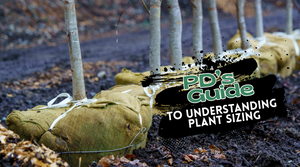Common Hackberry
Common Hackberry (Celtis occidentalis)
Common Hackberry (Celtis occidentalis) is a tough, adaptable deciduous tree native to much of North America, valued for its resilience in urban environments and its ecological importance to wildlife. With its broad canopy, distinctive bark, and tolerance of a wide range of soils and conditions, Hackberry is a dependable shade or street tree for challenging landscapes.
Distinctive Features
Hackberry features a broad, rounded crown with coarse-textured, oval to lance-shaped leaves that turn yellow in fall. Its gray bark is uniquely corky and ridged, giving mature trees a warty, sculptural appearance. Small greenish flowers in spring give way to pea-sized, reddish-purple fruits by fall, which persist into winter and serve as a food source for birds and other wildlife.
Growing Conditions
- Sun Exposure: Full sun
- Soil: Adaptable to a wide range of soils including clay, loam, and sand; tolerates both dry and moist conditions
- Water: Moderate; drought tolerant once established
- USDA Hardiness Zones: 3�9
Ideal Uses
- Focal Point: Distinctive bark and broad canopy make it a bold shade tree in large spaces
- Street Tree: Handles compacted soils, pollution, and urban stress
- Windbreaks and Shelterbelts: Strong branching and toughness make it ideal for exposed sites
- Wildlife Gardens: Provides food and nesting habitat for birds and butterflies
- Naturalized Landscapes: Excellent for large-scale reforestation or habitat restoration
Low Maintenance Care
- Watering: Water regularly during establishment; low supplemental water needed once mature
- Pruning: Prune in late winter to maintain structure and remove deadwood
- Fertilizing: Rarely needed; apply only if growth is poor or soil is depleted
- Mulching: Mulch to conserve moisture and suppress weeds in young trees
- Protection: Monitor for common pests such as Hackberry nipple gall; generally tolerant of most conditions
Why Choose Common Hackberry?
- Urban Toughness: Withstands pollution, salt, drought, and poor soil
- Wildlife Value: Fruits feed birds and mammals; larval host plant for several butterfly species
- Distinctive Bark: Corky ridges give mature trees striking winter interest
- Low Maintenance: Grows well with minimal input once established
- Focal Point: Large, spreading canopy and textured bark make it a standout in spacious landscapes
Celtis occidentalis is a rugged native shade tree that delivers visual character, wildlife benefits, and unmatched adaptability�making it a valuable focal point or background tree in parks, streetscapes, and naturalized plantings.

OUR SIZING
Not sure what 2 inch B&B or 30 Gallon Clump really means? This guide breaks down all our plant size terms so you know exactly what to expect, whether you're ordering online or picking up at our nursery. From caliper measurements to container volumes, we've decoded our system to help you shop with confidence.

Plant Detectives Shipping Guide
Nationwide plant shipping made easy. Learn how we ship trees, shrubs, annuals and perennials. No order too big or too small. Fast, careful, and contractor-friendly.



